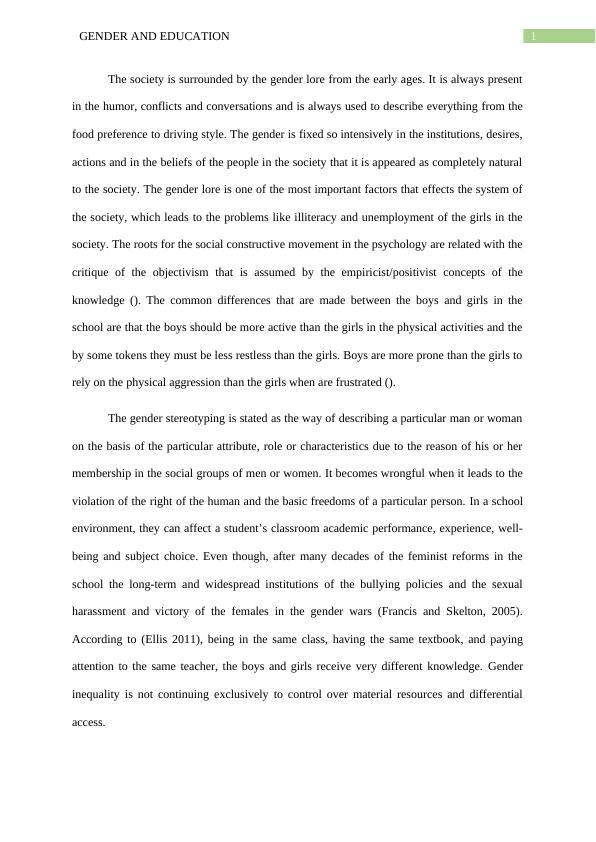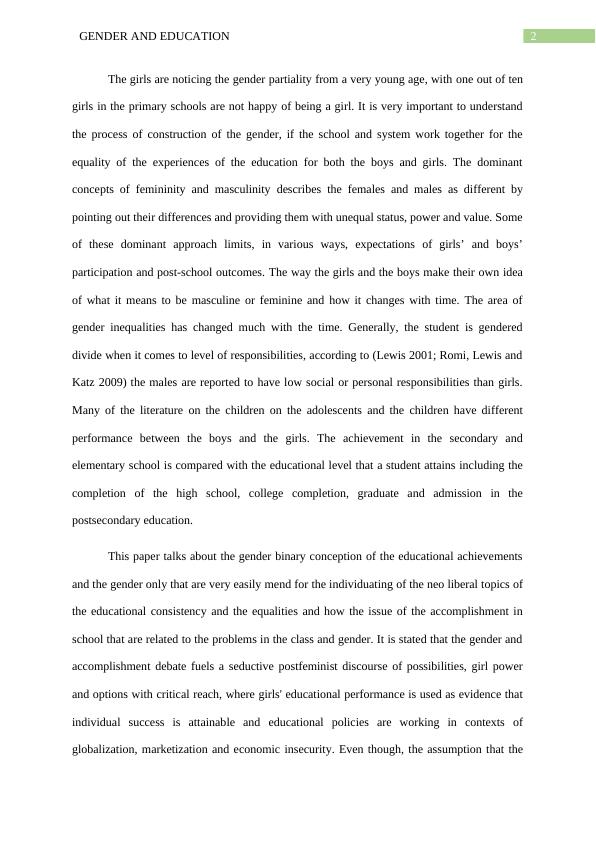Gender and Education
7 Pages1940 Words31 Views
Added on 2023-01-16
About This Document
This article discusses the impact of gender on education and the inequalities faced by girls in the school system. It explores the importance of promoting gender equality in education and the efforts made by organizations like UNESCO to achieve this goal. The article also addresses issues such as bullying, sexual harassment, and violence in schools and their impact on students' academic performance. Overall, it highlights the need for a more inclusive and equitable education system.
Gender and Education
Added on 2023-01-16
ShareRelated Documents
End of preview
Want to access all the pages? Upload your documents or become a member.
Sex and Gender: The Individual and Society
|6
|1015
|464
Gender Inequality in India - PDF
|6
|1175
|285
Impact of Class and Gender on Educational Experiences since 1918
|10
|3180
|452
Social and Cultural Context of Education
|12
|3455
|286
Difference in Performance of Boys and Girls in School Education
|16
|1047
|58
Chi-Square Assignment 2022
|3
|577
|22



